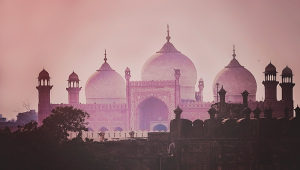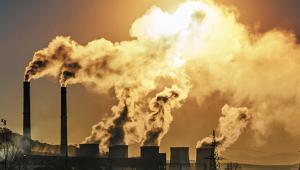By Matt Mercer | 27 November 2012
As cities go, few can beat Vancouver for natural setting and general livability. But Mayor Gregor Robertson is determined his city won’t rest on its laurels
At first glance, you’d struggle to find something wrong with Vancouver. Of course, the city’s beautiful natural setting — nestled between the Pacific Ocean and Canadian Rockies — plays a part, but so too does its many other qualities. No downtown freeway here, nor poorly designed architecture or lack of green spaces. The city’s Mayor, Gregor Robertson, is quick to pay tribute to his predecessors for inheriting such a world-renowned urban environment.
“We are benefiting from very good decisions made over generations,” he says. “There is the wilderness that surrounds the city, the ocean and beaches and forests. It is an idyllic environment and, fortunately, this has always been taken into account as the city has grown and expanded. Their challenge was to build a city that respected that environment and setting and, today, it is our responsibility to maintain it and make sure that quality of life and environment is paramount in the decisions we take.”
A proud history
Vancouver was formed 126 years ago. As the town grew into a city — thanks largely to high levels of immigration from both Asia and Europe — some “smart decisions were taken at key times,” says the Mayor. “In the 1920s and 1930s, the watersheds next to Vancouver were protected for perpetuity, protecting a clean and beautiful stretch of water. In the 1950s, clear decisions were made to densify the downtown core. They looked to Manhattan or Asian and European cities to focus development in the city center. This was different to many North American models that have led to outward sprawl.
“In the 1970s, there were decisions made to protect the agricultural land reserve surrounding the city. The other big departure from North American cities was to stop freeways from coming into our downtown. Vancouver has a big trans- Canada freeway on the city outskirts, but the whole downtown and surrounding area is not riddled with freeways like so many other cities on our continent. This is much better for public space and urban planning.”
Vancouver’s community has also come together. One of the most multi cultural cities in the world, with about half of its population of Asian descent and the other half European, Vancouver now enjoys an enviable level of inclusivity. “Although, in the past, we experienced our share of immigration issues and tensions, today we have a very peaceful and positive society,” says the Mayor. “All these cultures have come together and now live in harmony.”
But challenges remain
So it’s clear that Vancouver has a strong foundation. The city hosted a successful Winter Olympics in 2010 and has emerged from the financial crisis in better shape than many other cities in North America — not least because of its long focus on building up a knowledge-based creative economy within its city borders. But that’s not to say Vancouver is an urban utopia — free from the problems that blight other cities around the world. Far from it.
The city is one of the least affordable cities in the world — a fact that Mayor Robertson readily concedes. “We have levels of poverty and homelessness that would surprise many,” he says. “In a city as affluent as Vancouver, we have people sleeping on our streets and it has been a big focus of mine to ensure that no one has to sleep outside, particularly during our cold winters. This is a problem that has been created by a very high price of land and a lot of pressure on development, and this has led to poverty and homelessness at the same time. There is a lot of work to do to make sure our city offers the best quality of life to every single person who lives there.”
There are also challenges with transportation and housing. “We’re constantly looking for senior government funding to support big projects that are essential to deal with the affordability issue,” says the Mayor. “Financial support is also needed to ensure our transit system can cope with the growing population of our region — some two and a half million people. In Vancouver, we have about 40% of people out of their cars and instead using public transit or walking and cycling. 40% is a high proportion and only New York is ahead of us in North America, but we are focusing on hitting 50% by 2020.”
On the horizon
When examining his current priorities — and factors behind Vancouver’s recent successes — the Mayor says that ensuring its citizens feel that they are contributing to the solutions is crucial. “We have had a very vigorous process of community engagement on the goals we have set for our city,” he says. “We have had great success in opening up our data and crowdsourcing. We’ve had some great ideas come from these efforts that we can put into action.”
He also cites political courage and the will to deliver transformative change. “We can’t shy away from this, even though we have to be careful about how fast we push the pace. But political will is essential and community will is part of that — and this ties into the community engagement; we need to build the case for change and enable them to be part of it.”
Mayor Robertson has set some big goals going forward. While ending homelessness by 2015 and making Vancouver the safest big city in North America rank highly, chief among them is the aim to make Vancouver the greenest city in the world by 2020.
Although Vancouver is widely lauded for its environmental track record, the new plan sees a set of ambitions ranging from greener transportation to zero waste to achieving an even lighter carbon footprint. “We now have a proposal that 35,000 Vancouverites contributed to, with 15 specific targets in 10 areas and an action plan that is now being implemented,” says the Mayor. “I’ve put a lot of our focus on the green economy and the creative economy. These are really crucial for out future and to help us as we transition away from the resources industry. About 35% of the jobs in Vancouver are in the creative and green economies.”
Mayor Robertson believes we are at a pivotal moment — both for the global economy and the cities that are on the frontline of shifting demographics and stretched resources. “It is important for city leaders to share and exchange information,” he says. “We need to look at what other cities are doing, and all of us have to strive to do even better.”
This article first appeared in the October issue of Ernst & Young's Citizen Today













